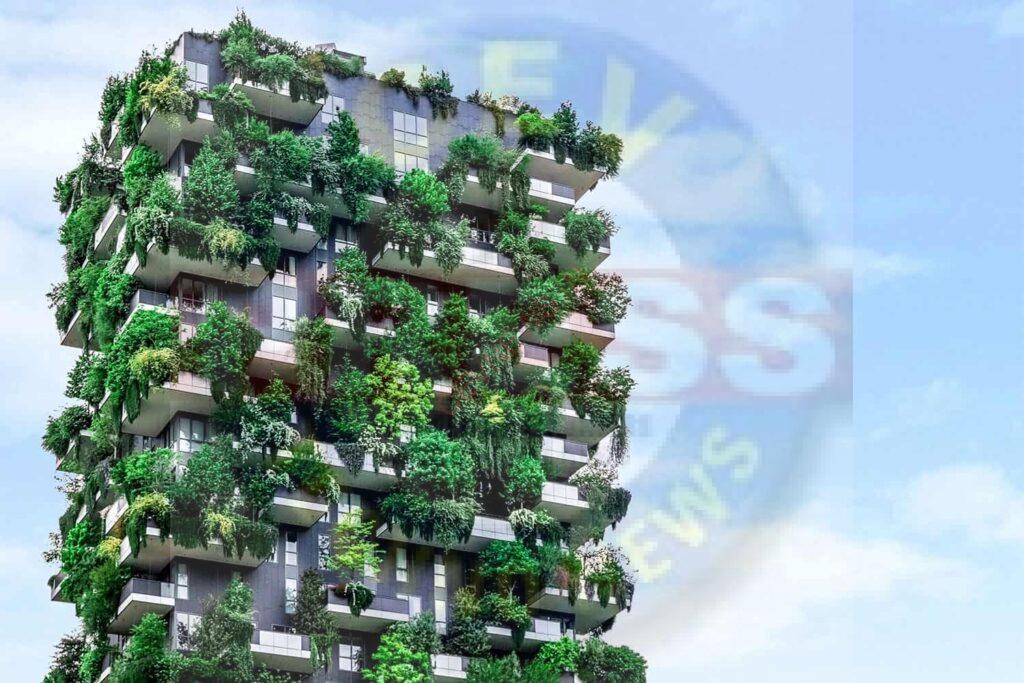ARCHITECTURAL DESIGN AND CLIMATE CHANGE: BUILDING FOR A SUSTAINABLE FUTURE
Architectural Design and Climate Change: Building for a Sustainable Future in India
Introduction
Climate change is a critical global issue, with significant implications for India, one of the world’s most populous and rapidly developing countries. The architecture and construction industries play a pivotal role in addressing climate change through sustainable design and building practices. This article explores how architectural design in India can mitigate climate change impacts and contribute to a sustainable future.
Understanding the Impact of Climate Change on Architecture
1. Rising Temperatures and Urban Heat Islands
- Urban Heat Islands (UHIs): Cities in India, like Delhi and Mumbai, experience higher temperatures than surrounding rural areas due to dense construction and reduced vegetation.
- Architectural Response: Implementing green roofs, vertical gardens, and reflective materials can help reduce UHIs.
2. Increased Frequency of Extreme Weather Events
- Flooding and Cyclones: Coastal cities are increasingly vulnerable to flooding and cyclones.
- Design Strategies: Elevated buildings, improved drainage systems, and resilient construction materials can mitigate damage.
3. Water Scarcity and Droughts
- Water Management: Efficient water use is critical in drought-prone areas.
- Sustainable Practices: Rainwater harvesting, greywater recycling, and drought-resistant landscaping are essential.

Sustainable Architectural Practices
1. Energy-Efficient Building Design
- Passive Design: Utilizing natural light, ventilation, and thermal mass to reduce energy consumption.
- Insulation and Glazing: High-quality insulation and double-glazed windows to maintain indoor temperatures.
2. Renewable Energy Integration
- Solar Energy: Installing solar panels on rooftops and integrating photovoltaic cells in building facades.
- Wind Energy: Utilizing small-scale wind turbines where feasible.
3. Sustainable Materials and Construction Methods
- Local and Recycled Materials: Using locally sourced and recycled materials reduces carbon footprint.
- Low-Carbon Concrete: Adopting alternative binders and reducing clinker content in cement.
4. Green Building Certifications
- LEED and GRIHA: Obtaining certifications like LEED (Leadership in Energy and Environmental Design) and GRIHA (Green Rating for Integrated Habitat Assessment) to ensure adherence to sustainable practices.
Case Studies of Sustainable Architecture in India
1. The Indian Institute of Management, Ahmedabad
- Architect: Louis Kahn
- Sustainable Features: Utilization of local materials, passive cooling techniques, and courtyards to enhance ventilation.
2. Rajiv Gandhi International Airport, Hyderabad
- Architect: HOK
- Sustainable Features: Solar power generation, rainwater harvesting, and energy-efficient lighting.
3. Infosys Campus, Hyderabad
- Architect: Hafeez Contractor
- Sustainable Features: Extensive green spaces, efficient water management, and renewable energy usage.
Policy and Regulation
1. Government Initiatives
- Smart Cities Mission: Promoting sustainable and smart solutions for urban development.
- National Building Code: Incorporating sustainability guidelines in building codes.
2. Incentives for Green Buildings
- Tax Benefits: Providing tax incentives for buildings with green certifications.
- Subsidies: Offering subsidies for renewable energy installations and sustainable construction practices.
Challenges and Opportunities
1. Cost and Awareness
- Initial Investment: High upfront costs for sustainable technologies can deter adoption.
- Education and Training: Increasing awareness and training among architects and builders is essential.
2. Technological Advancements
- Innovative Materials: Development of new materials that are both sustainable and cost-effective.
- Smart Building Technologies: Integrating IoT and AI for energy management and building automation.
Architectural design in India has a crucial role in addressing the challenges posed by climate change. By adopting sustainable practices, integrating renewable energy, and using innovative materials, architects can create buildings that are not only environmentally friendly but also resilient to the changing climate. Collaboration between government, industry, and educational institutions is key to fostering a sustainable future for India.
Building for a sustainable future requires a holistic approach, where environmental, economic, and social aspects are considered. Through thoughtful design and sustainable practices, architects can contribute significantly to mitigating the impacts of climate change and ensuring a greener, more resilient built environment in India.


